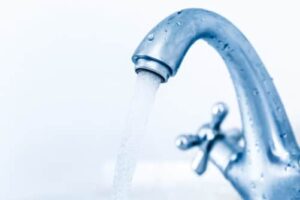Background:
A city located in the United States was investigating high lead levels in their system with lead levels of 17 ppb which is over the U.S. EPA (United States Environmental Protection Agency) action level of 15 ppb. During the investigation, the city also changed their coagulant from ferric sulfate to poly-aluminum chloride to reduce the iron fouling on their membrane system. This switch caused the lead levels to spike in their system to a high of 27 ppb but did eliminate the iron fouling on their membrane system which reduced their down time and chemicals required to clean the membranes. Based on the benefits to the treatment system from the changes, the city decided to explore different phosphate blends for lead corrosion control.
The water system treats water from a nearby lake through conventional treatment followed by membrane filtration and pumps an average 68,137 m3/day.
| Water Quality Data | ||
|---|---|---|
| Iron: 0.02 mg/L | pH: 7.7-7.8 | Alkalinity: 100 mg/L |
| Hardness: 140 mg/L | Manganese: 0.01 mg/L | |
Evaluation:
The city and Carus evaluated the water quality and considered the lead leaching as they evaluated the proper product selection for this municipality. A corrosion control study was completed to test phosphoric acid at 1.0 mg/L as total phosphate (1.0 mg/L as orthophosphate) versus CARUS™ 8600 blended phosphate at 1.0 mg/L as total phosphate (0.70 mg/L as orthophosphate).
Conclusions:
The corrosion control study results showed that the CARUS 8600 blended poly/ortho phosphate provided better treatment than the phosphoric acid product with the following results:
• Lead corrosion rates were 0.26 mpy with orthophosphate and were lowered to 0.07 mpy with CARUS 8600
• Copper corrosion rates were 0.53 mpy with orthophosphate and were lowered to 0.26 mpy with CARUS 8600
• Mild Steel corrosion rates were 4.20 mpy with orthophosphate and were lowered to 3.33 mpy with CARUS 8600
Based on the results of the corrosion control study, the city applied CARUS 8600 to the finished water and this resulted in:
• Lead levels dropping from 27 ppb to 5 ppb in 1 year
• Keep their new coagulant which had resulted in less membrane fouling

